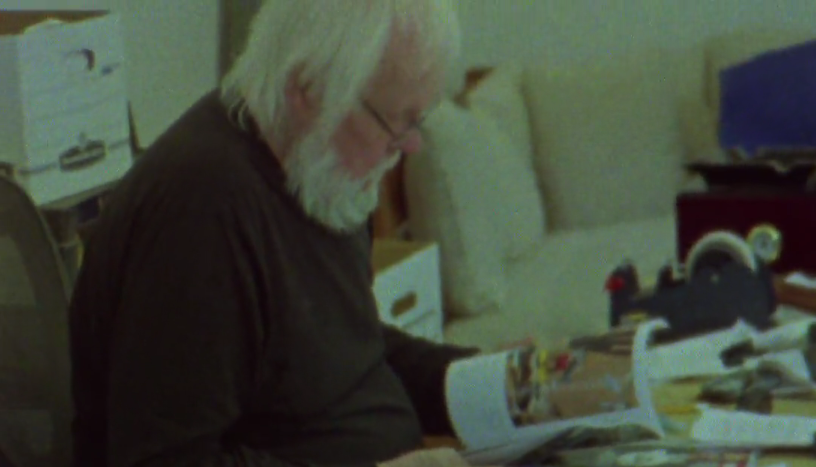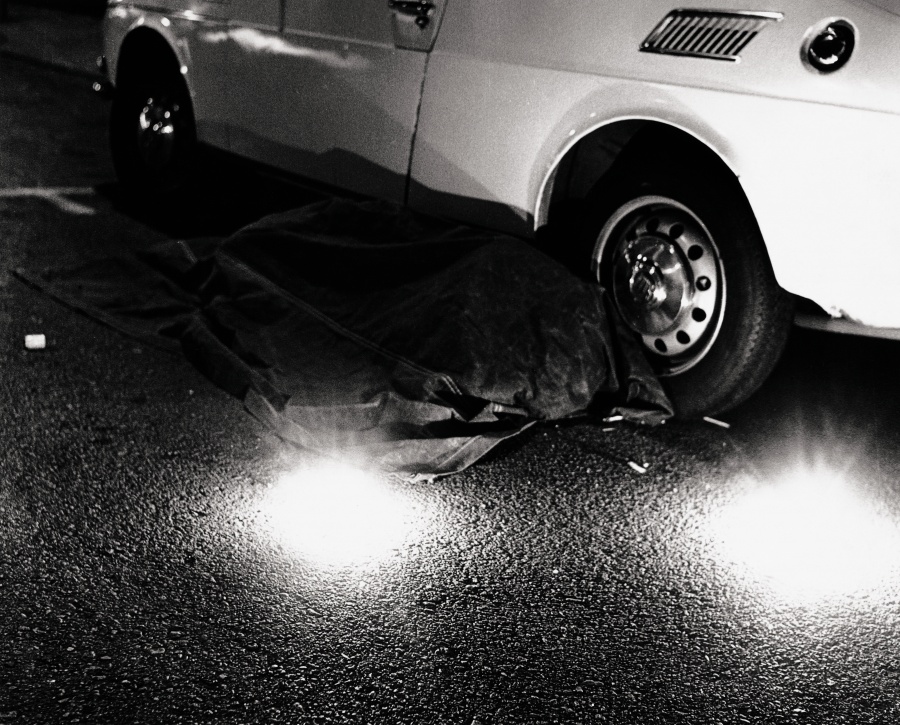The Werewolf, in My Mind, Is the Most Humanlike Monster
28.06.18 | Article by Philippa Snow | Art, culture, interview | MM13 Click to buy
Philippa Snow: I wanted to ask you about how you got into using the werewolf motif.
David Altmejd: It was pretty intuitive. I think I just felt as though my work was a little too structural, very minimalist; I would use large light tables, I would use Plexiglas, so all the materials were pretty cold. I just thought at one point that these structures I was building needed to be infected with something. Then I started thinking, what would be the one object that would contrast with them the most? So I thought about a body part. Actually, I thought about a head, which I thought would be powerful enough, and would contrast with the coldness of the structure. I thought with a head, I could start creating a very particular energy.
But then I thought that maybe a human body part, the human head, was a little — not necessarily cliché, but certainly something that had become commonplace in contemporary art. Some of my favourite artists have been Kiki Smith, and Louise Bourgeois, and Robert Gober, and I love their work; but I did feel that following work like theirs, the use of human body parts in art had become more predictable. So I thought instead about referring to the body of the werewolf, which in my mind is the most humanlike monster: meaning the werewolf body part would be just as powerful to look at as the human body part. It’s possible for a viewer to identify with it. But at the same time, it’s weird instead of being familiar. And I really like that.
So that’s the reason I started using the werewolf body parts in my art. And very soon afterwards, once it found its place in my work, I started being conscious of ideas of transformation, and energy, and contrasts between light and darkness, and tension, and all these things, so I just decided to keep the werewolf as a kind of totemic figure in my work.

Matter, 2015.
PS: It’s interesting that you mention the transformation aspect of it, because a lot of your work has the appearance of being…this is an odd thing to say about sculpture, but it almost has the look of something that’s in flux, or something that’s in development. It looks like an organic thing.
DA: Yeah, and it’s important for me to feel that the object, or the sculpture itself, is in the process of developing. One of the things I realised about sculpture that made it really amazing, and that gave it so much potential, is the fact that it exists in a real space. It doesn’t exist in the space of representation. So it exists in the world in almost the same way that a body does, or a person does, you know?
PS: Right. A photograph or a painting of a body that’s life sized is never going to be like a body in the same way as a sculpture of one at the same scale.
DA: And the body of a person is probably the most amazing thing that exists, for so many reasons. So the fact that sculpture inhabits the same space means that it has the potential for having the same kind of presence. Ever since I realised that, I’ve been trying to use the body of a person as a model; and one of the characteristics of a human body is that it’s constantly transforming. A person is never a finished object, and that’s part of what makes them amazing.

Spacing Out, 2017.
PS: And because a lot of the structures are quite dreamlike, there’s quite often the suggestion of a psychological transformation as well.
DA: Absolutely, yeah.
PS: Are there any filmmakers you’re particularly inspired by?
DA: There are certainly filmmakers whose work has excited me. Often I don’t like saying this, because I think that people consider it really, really obvious, but I love David Cronenberg.
PS: Oh, me too!
DA: But not necessarily because of his taste for the organic or the weird. I like him conceptually. I like the way he builds a movie. I like the way he understands — and this is my interpretation, I don’t know if it’s his, but I just have a feeling that he understands the film as being this independent object that develops its own intelligence, and its own language; its own logic, its own sexuality. I kind of like the fact that he steps back and lets the film develop by itself as if it was a body. Who else?
PS: I mean: David Lynch was the big one I was thinking of. But I’m always thinking about David Lynch.
DA: I would say that Lynch has been very, very important for me. Just as much as certain American visual artists from the eighties and the nineties are an influence — ones that still work today, but were very well-known then, like Cindy Sherman, Paul McCarthy, Tony Oursler, Mike Kelley — I see David Lynch the same way. They were very important for me at the beginning. I really admired that attitude; the space that they were exploring, which was somewhere between supercomedy and superdrama. You know how sometimes there are scenes in Lynch where you don’t know if you’re supposed to laugh, or to feel uncomfortable?
PS: I was thinking about it because of his being very interested in the fragmentation and the refraction of the human body — but especially in the head. There’s always a lot of stuff about head trauma, decapitation. Are you watching the new series of Twin Peaks?
DA: No, I haven’t been.
PS: Oh it’s amazing! I’m a Lynch obsessive anyway, but it’s really pulled me right back into the depths of that obsession.
“The body of a person is probably the most amazing thing that exists.”

Untitled, 2006.
DA: I do intend to watch it; I saw the first episode and I’m meaning to go back. I really loved the way the special effects are so clumsy, if I’m allowed to call them that?
PS: He loves that, I think.
DA: Because they could have been high-tech, but he obviously chose otherwise. That was amazing. That was completely his sensibility. Nobody else could have done that and actually pulled it off.
PS: No — it’s like the robin at the end of Blue Velvet. It’s an aesthetic decision.
DA: And so funny and not-funny at the same time. Personally, I like being uncomfortable. I think my favourite kind of laughter is uncomfortable laughter; and I think the best horror is the sort of horror that makes me want to giggle because I’m so uncomfortable.
PS: On an unrelated note (or maybe a related note, as we’re talking about uncomfortable laughter) — I read in an interview that you’re really into the Real Housewives?
DA: Oh my God! Yeah, yeah, absolutely!
PS: Because I’ve never seen the Real Housewives shows, but I did do a thing this year for which I had to watch every episode of Keeping Up With The Kardashians ever broadcast in one month. There are thirteen series of it, so that was intense.
DA: I’ve never watched Keeping Up With The Kardashians, but my idea is that it’s one family, so they’re all sort of together in this, right? They’re not all rivals? But the Real Housewives are so great because they’re all rivals.
PS: Is that inspiring somehow, because you’re watching — I don’t know, humanity play itself out?
DA: I mean: it’s hard to see the humanity.
“A person is never a finished object.”
PS: Really? It’s just totally inhumane?
DA: Totally inhumane. I think that it’s totally human, because even the producers are human, so it’s technically a product of humanity. So it’s human in that way. But the set-up is so unlike anything you could understand or experience. I can’t start to think or imagine what it would be like to have a camera on you all the time, or have people there encouraging you to drink wine all the time so that you’ll be in a volatile mood. And producers who will make more money if there’s a fight! It’s a horrifying set-up. It’s like putting a rat in a maze, a labyrinth: of course they’re going to act like rats. They’re in a context that’s kind of indescribable. So it’s hard to understand them. But it’s exciting to see human beings try to survive in such a weird, extreme environment.
PS: We could tie it into our earlier discussion by saying that Real Housewives is a constructed take on the organic. And there are a lot of physically constructed bodies in reality TV, also! Certainly in the case of the Kardashians.
DA: Yeah, you mean facelifts and so on?
PS: And really extreme body augmentations. I find that fascinating, as well.
DA: And it’s funny, because with the Real Housewives there are different — they call them franchises, but it means there are spin-offs in different cities. And they’re usually groups of women who have transformed their bodies in very different ways. For example, the Real Housewives of New York are a group of women who are transforming in one very specific direction, and then you go to Beverley Hills and the Housewives there are taking a totally different transformative route. They end up looking like different species, in the end. It’s amazing.
Read more in Modern Matter issue 13, The Anti Issue.



